The first decade of the new millennium was something of a golden era for the more casual firearm collectors here in the United States. At that time, the marketplace was replete with internationally manufactured military surplus rifles and handguns selling at impressively low prices. Russian Mosin-Nagant bolt-actions with all-matching serial numbers and the original stocks were selling for $89. I had buddies who were packing Bulgarian and East German Makarovs chambered in the then-plentiful 9×18 mm Makarov pistol cartridge since they were compact, well-made and available for around $200. SKS rifles and Tokarev pistols also abounded at low prices.
But as time marched on, two market factors kicked in to cause surplus gun prices to rise. First off, these retired military firearm caches were fairly expansive, but they were not infinite. The firearms, along with the $0.05 to $0.10 per round surplus ammunition, simply dried up. Secondly, the folks in possession of these overseas caches eventually figured out what American collectors were paying for these guns. As a result, they upped their prices. What are the more budget-minded self-defenders and casual collectors to do now that the military surplus supply is mostly tapped out?
There is still a steady supply of quality used rifles, shotguns and handguns that sometimes goes overlooked by the general shooting public. I’m referring to law enforcement officer (LEO) trade-ins. These retired long guns and handguns guns have been toted around a good deal but not fired all that often. Even though they have been swapped out for something new, and they may not win a beauty contest, these guns still have plenty of working life in them. Best of all, these guns can usually be purchased at attractively low prices.
I’ve been dipping into this sleeper surplus supply via AIM Surplus over the last few years. This company has proven to be a top-notch source for a variety of now off-duty pistols and revolvers. The guns have been great to work with and the examples shown here have come from this company. Here is a closer look at the benefits and trade-offs of LEO trade-ins.
Bang For The Buck
LEO trade-ins, like other used guns, have the potential to provide greater value per dollar spent than some brand-new guns selling for similar prices. For example, AIM Surplus recently listed an allotment of 9 mm Glock 17 Gen 4 pistols in great shape on sale for $319. Glocks like this often cost somewhere around $600 brand new. As of this writing, the company is offering a golden find. It’s a shipment of unissued Beretta 9 mm pistols originally ordered for the Brazilian police in as-new condition. The pistols ship in unfired condition in their original cases with all of the factory accessories, including an owner’s manual in Portuguese! When these first-generation guns were launched, they had a suggested retail price of $500. But these unissued Berettas are on sale for $299.95.
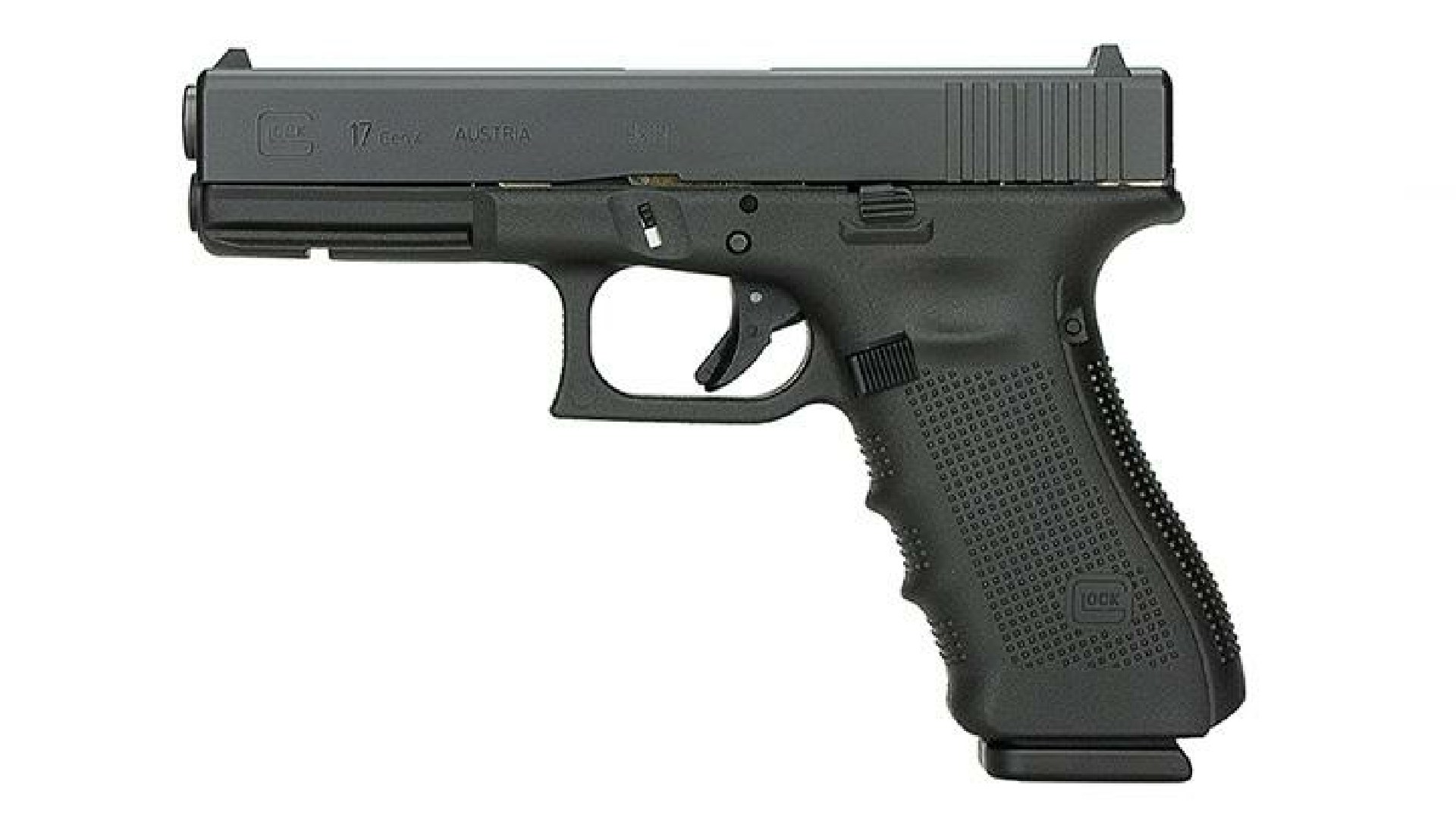
The common trade-offs that attend the lower prices include some degree of wear and tear and possibly no factory extras. Unless otherwise specified by the seller, expect dings, scratches, holster wear and possibly some corrosion from long term storage. There’s also a good chance these used guns will need a deep cleaning along with the typical inspection, bench checks and lubrication before shooting.
As for the original factory support gear, it can be a coin toss. In a recent evaluation of two Smith & Wesson M&P pistols, one arrived in the original case, two extra backstraps and an owner’s manual. The other shipped in a small cardboard box, no additional backstraps and an aftermarket grip sleeve installed. The listings should be clear as to the number of magazines you’ll get. It’s unusual for pistols to ship without at least one. Make sure to double check the site inventory to see if compatible used magazines are being sold separately. For the M&Ps, the retired factory magazines were selling for around $15 which is notably less than $42 to $49 for new magazines.
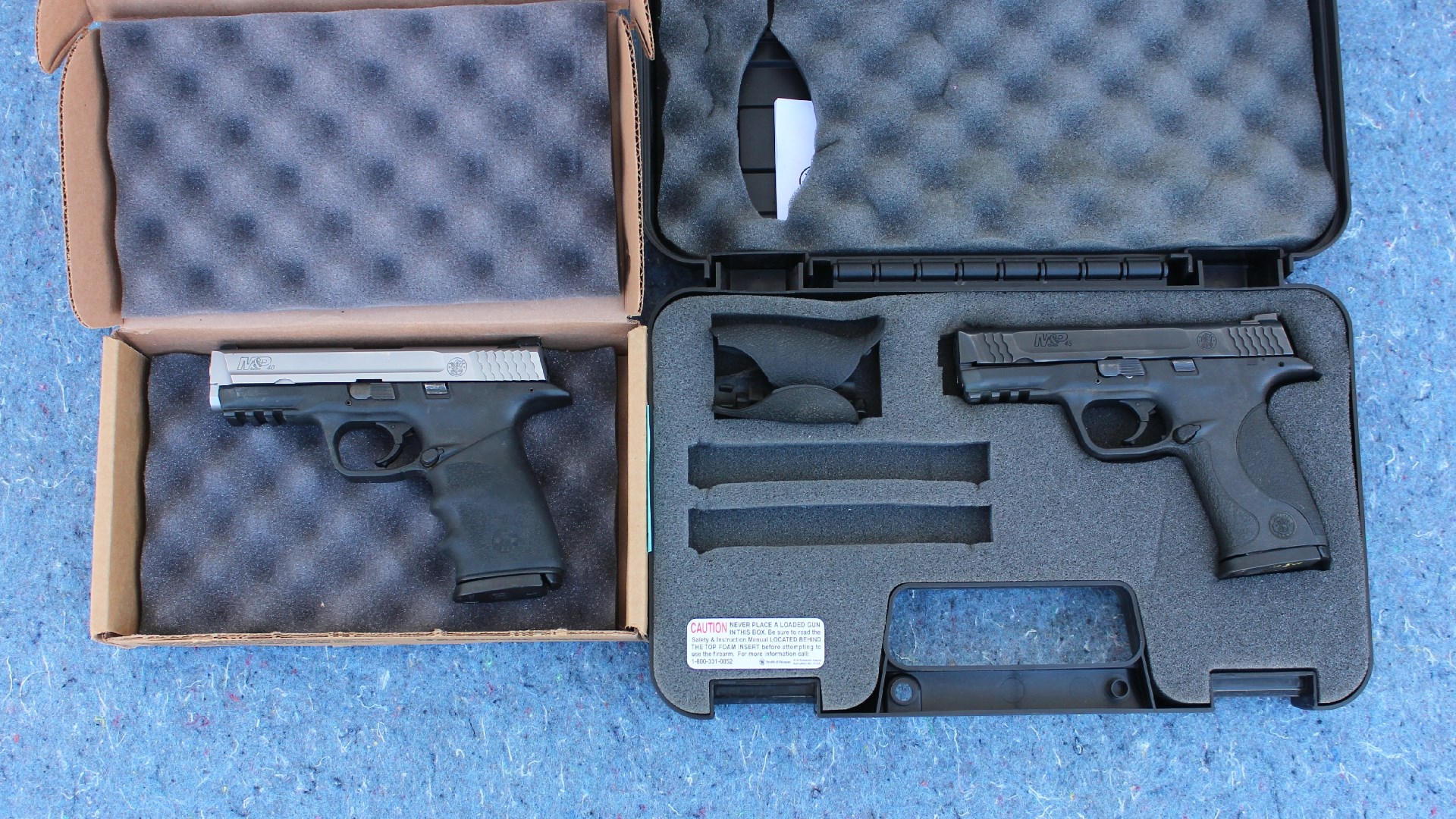
Last Year’s Fashions
Law enforcement agencies tend to stick with firearms from reputable manufacturers. Popular providers include previously mention Beretta, Glock and Smith & Wesson along with other trusted brands including FN, HK and SIG Sauer. And the models selected tend to have a proven track record for desirable qualities including durability, reliability and repeatable defensive accuracy. Although the selection of used models is not as expansive as the commercial market place, the quality is solid.
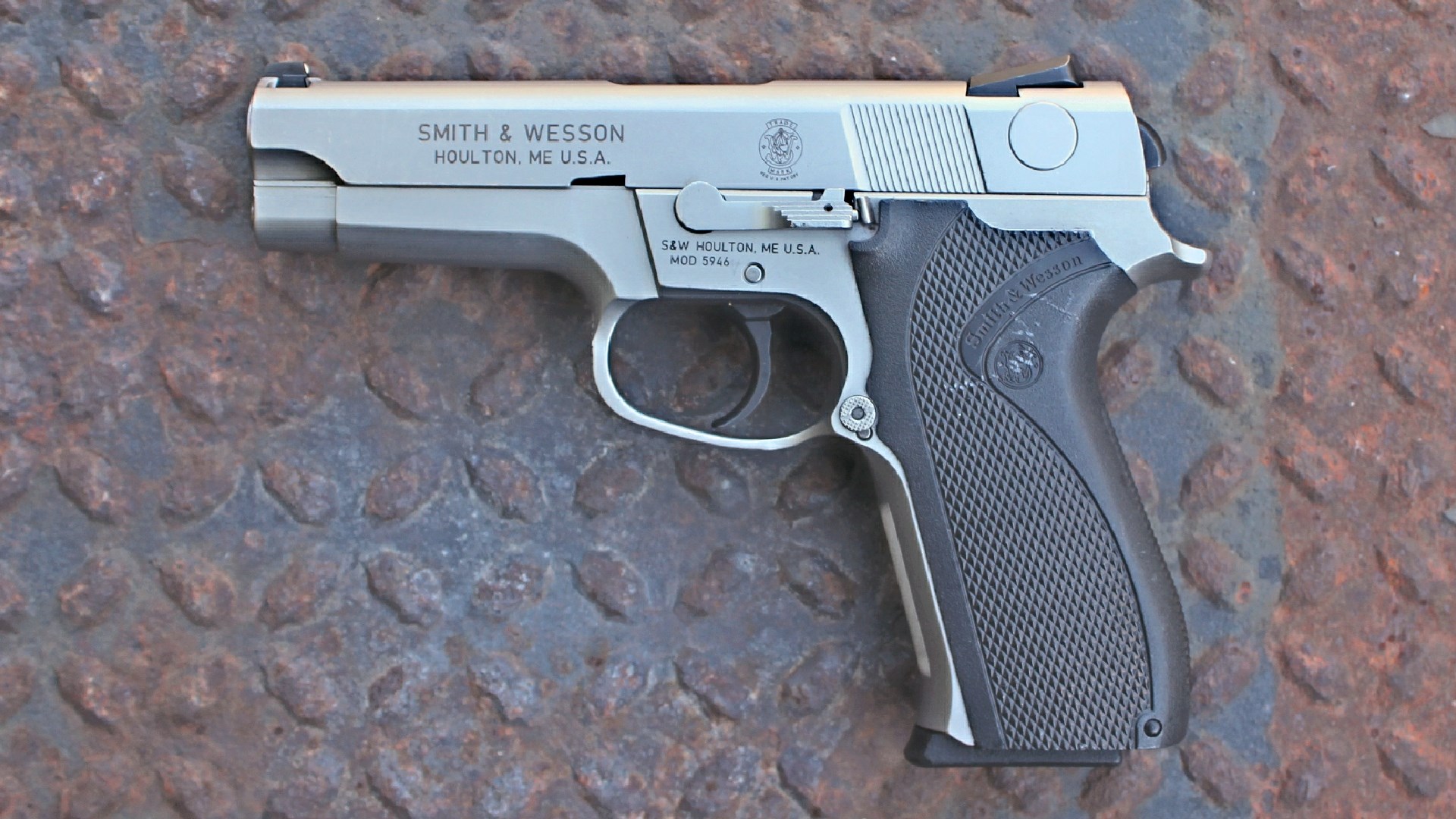
As technology and shooting trends evolve, so do the features manufacturers provide. Some of the latest and greatest defensive pistols leave the factory with compensated barrels, night sights, optics-ready slides, dustcover accessory rails and tuned triggers. Older pistols may lack any or all of these features. Some models can be upgraded with some of these features while other cannot. Whether a LEO trade-in is a bargain at that price or not will depend on your needs and objectives.
Cartridge Selection
LEO trade in guns are typically chambered in standard calibers. Retired shotguns are going to be 12 gauge. AR platforms will most likely be .223 Rem./5.56 NATO or .308 Win. Double-action revolvers are going to be configured for .357 Mag. or .38 Special. As for pistols, expect 9 mm, .40 S&W and .45 ACP options to be the dominant choices. Whether or not this caliber range is a plus or a trade-off depends what you have in mind. If there is a caliber you would like to try, like .45 ACP or .40 S&W, then a LEO trade-in allows you to try this caliber on for size without breaking the bank. The same is true for those who are gifted, inherit or find a great deal on .45 ACP or .40 S&W ammunition but don’t currently have a pistol chambered for it. A sub $250 handgun is a great way to put the ammunition to work for you.
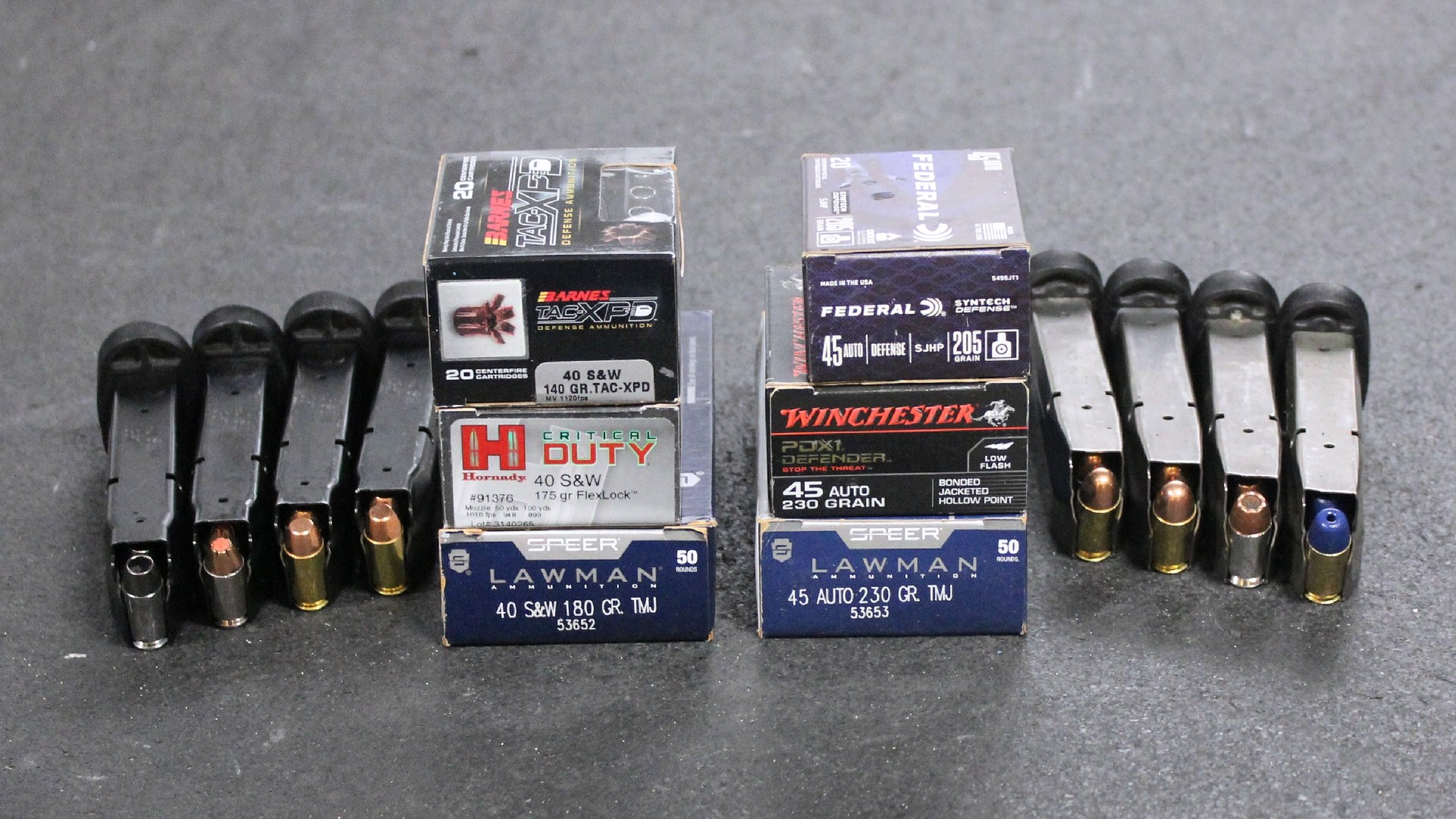
It should be noted that, with just about everyone in a uniform switching to 9 mm pistols, the .40 S&W semi-automatics are selling cheaply! There’s certainly nothing wrong with buying one and shooting it as-is. However, with some makes and models, a simple barrel and magazine swap will convert these guns from .40 S&W to 9 mm. Even with the extra parts, the pistol will still cost less than a new 9 mm and you’ll have a dual-caliber pistol. That could be useful just in case the 9 mm ammunition supply dries up (again).
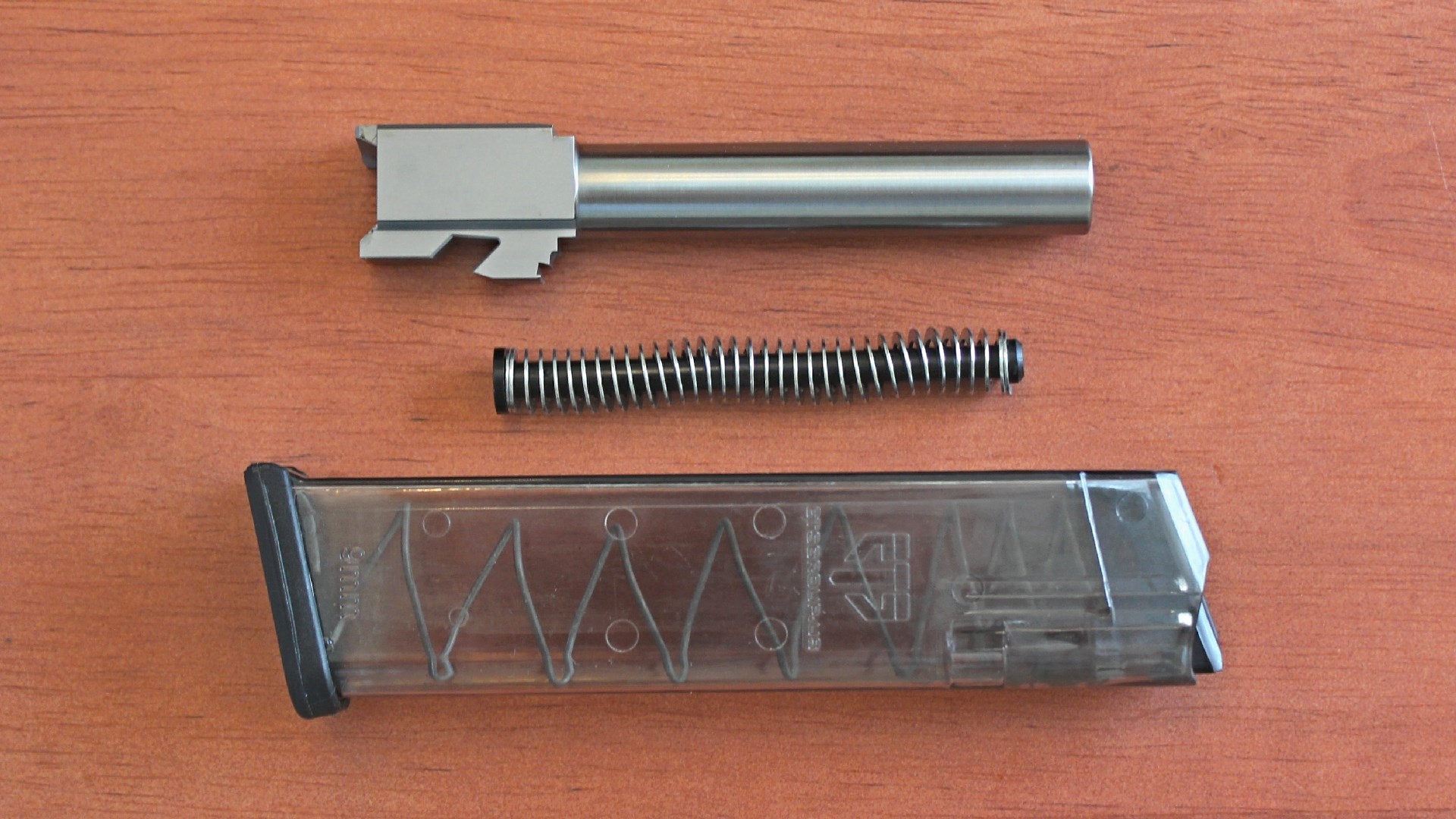
Budget Friendly Defensive Options?
Over the years, I’ve evaluated a variety of handguns provided by AIM Surplus, including a SIG Sauer P226 chambered in .40 S&W, a Smith & Wesson Model 5946 9 mm and Smith & Wesson’s Model 64 series .38 Special revolvers. These handguns, along with others, exhibited levels of performance, reliability and accuracy suitable for personal protection inside and outside of the home. These guns may be older and outfitted with more basic sets of features, but they will get the job done. And because guns like this are procured by the hundreds and thousands, affordable holsters, magazines and other support gear tends to be readily available.
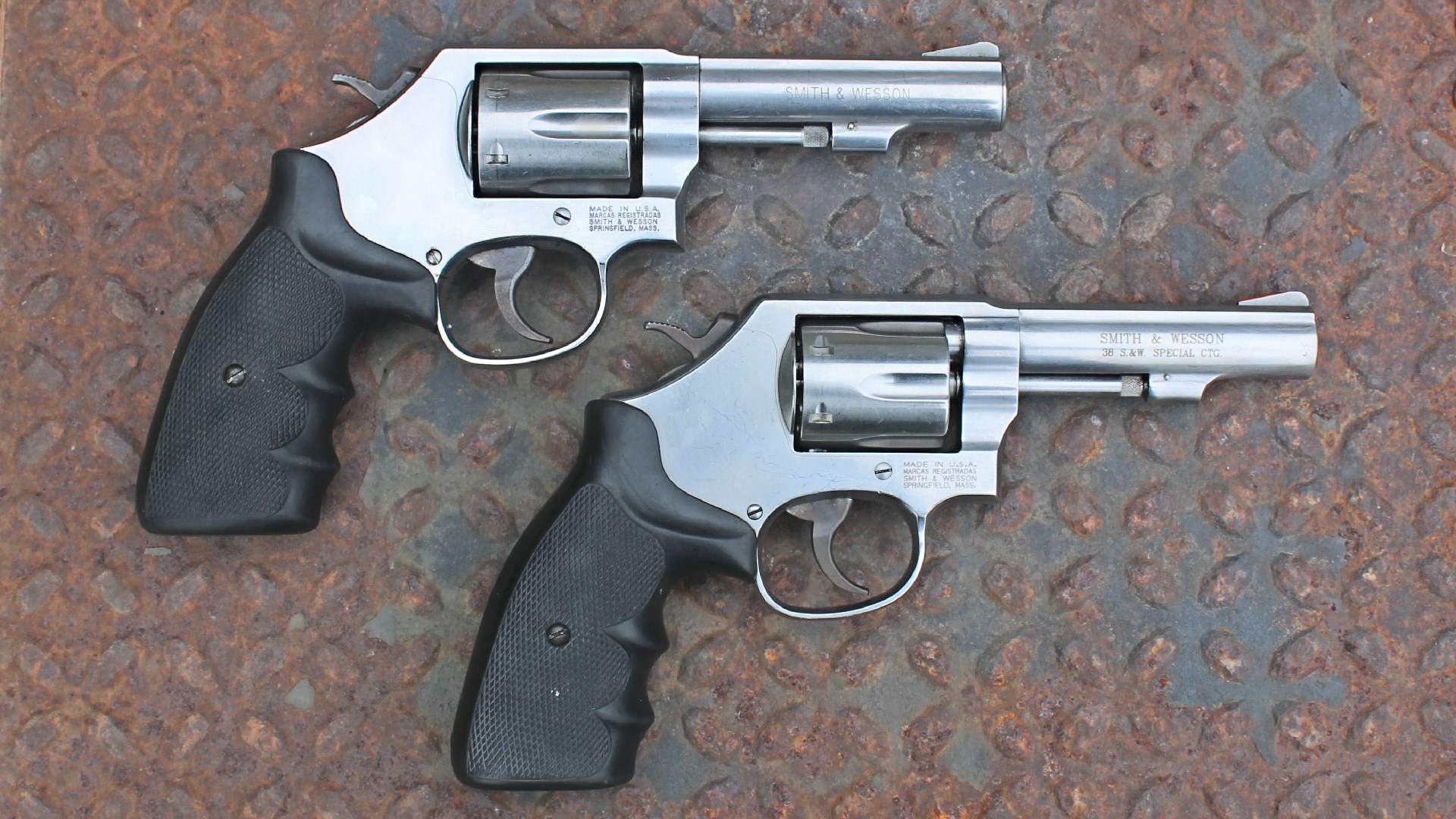
The test guns mentioned here have all been ready to use when they arrived or only called for minor fixes, like swapping the grip. Much like automobiles, firearms contain what manufacturers refer to as “consumable components.” These are the parts that wear out based on frequency of use and are likely to be swapped out, or possibly upgraded, within the working lifespan of the machine in question.
In most cases, the parts are designed to be relatively easy to replace and affordable to purchase. For cars and trucks, the consumables consist of air filters, brake pads, windshield wiper blades, tires, etc. For handguns, these parts can include sights, action springs (hammer, trigger, striker, etc.) grips, magazines and magazine components like the follower, spring or baseplate.
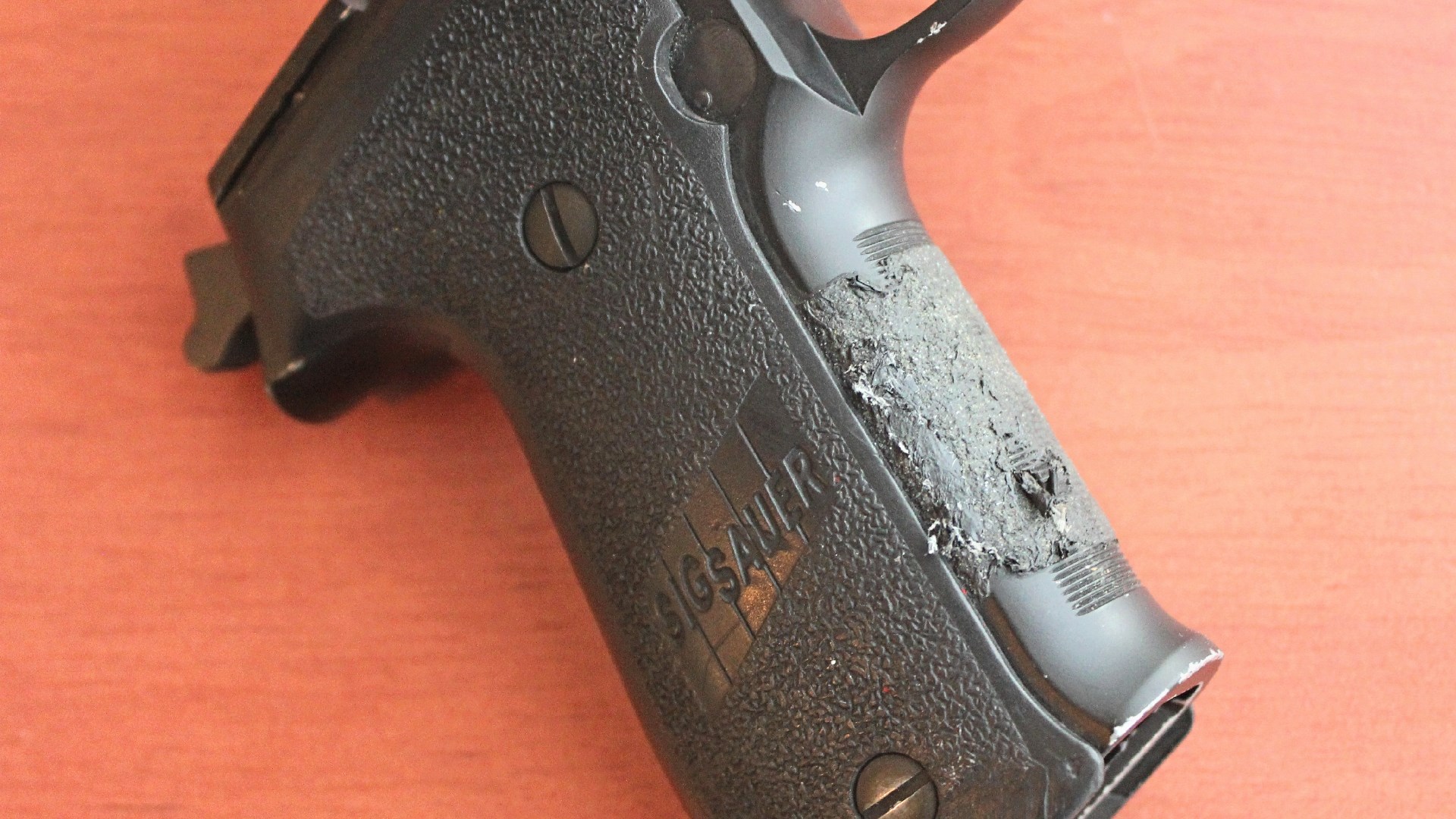
The way to know if your gun might need parts replaced is to vet it properly before staging it for personal protection. Give it a thorough cleaning and proper lubrication, then run a set of bench checks to verify that all of the controls and functions are cycling properly. If it all looks ship-shape, then head to the range and fire 100 to 200 rounds, including at least two or three of magazines worth of your preferred defense hollow-point loads. If there are no malfunctions, clean and lubricate once more and you are good to go. But if you run into problems you can’t resolve, put the gun back in the safe until it can be inspected and repaired by a qualified gunsmith.
The key to making the most of the LEO trade-in market is vigilance. Great deals like those discussed here show up regularly, but they may not stick around for long. The available inventory is constantly changing. Keep an eye out and, if you find a good fit for your needs, don’t wait too long to buy it. For more information about the handguns mentioned here, and other currently available LEO trades, visit aimsurplus.com.

Read the full article here

